John Groom's Crippleage and Flower Girls' Mission, Clerkenwell, London
John Alfred Groom was born in Clerkenwell in 1845. At the age of 21, having learned the trade of silver engraving, he set up his own engraving business at his home on Sekforde Street, Clerkenwell. He was a regular churchgoer and also taught at Sunday School. He was introduced to the plight of many London's slum-dwellers by a friend who was a City official and also became particularly concerned with the situation of the blind and disabled girls on the streets around Farringdon Market scraping a living selling flowers and watercress to passers-by.
In 1866, he hired a large meeting room on Harp Alley near Covent Garden and founded the 'Watercress and Flower Girls' Christian Mission', otherwise known as 'John Groom's Crippleage'. The Mission provided the girls with a free early morning mug of cocoa, and a hot dinner for which a nominal halfpenny was charged. There were also facilities for washing and for mending clothes. Groom read the girls Bible stories and also encouraged them to attend one of the three Sunday Schools he had established. Groom's activities were given a considerable boost when Lord Shaftesbury lent his support to the work, and Lady Burdett-Coutts also promoted the activities of the charity.
The Mission subsequently moved to Laystall Street. In 1876 it transferred to larger premises at 12 Clerkenwell Close where the accommodation included a school room for 350 children and a soup kitchen fitted with coppers. In an effort to give the girls practical help, the Mission was turned into a well-organised floristry factory. The Girls' Flower Brigade, as it became known, made up bouquets which were sold from the premises. In the winter months, the girls switched to making artificial flowers, which were then becoming popular. The scheme proved successful and in 1894, the Mission moved to larger premises at Woodbridge Chapel, close to Sekforde Street.
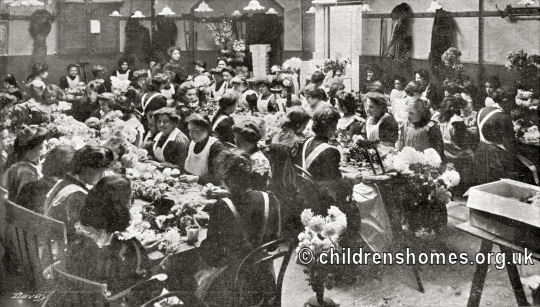
Workroom at John Groom's Crippleage and Flower Girls' Mission, Clerkenwell, early 1900s. © Peter Higginbotham
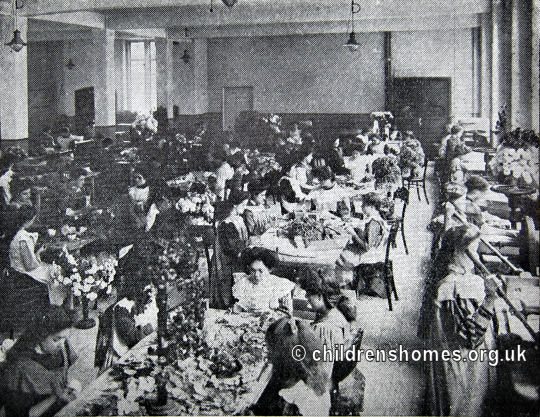
Workroom at John Groom's Crippleage and Flower Girls' Mission, Clerkenwell, early 1900s. © Peter Higginbotham
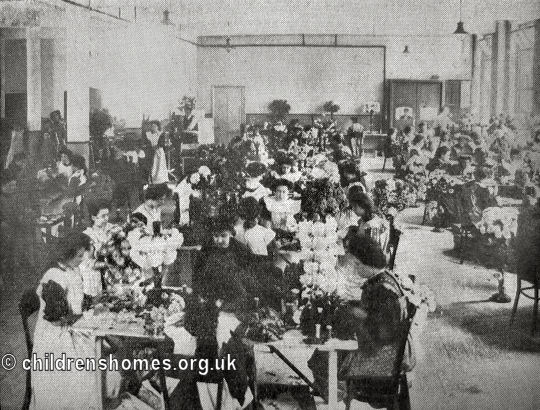
Workroom at John Groom's Crippleage and Flower Girls' Mission, Clerkenwell, early 1900s. © Peter Higginbotham
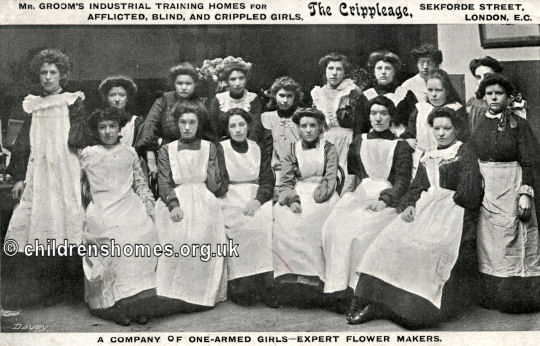
One-armed flower makers, John Groom's Crippleage and Flower Girls' Mission, Clerkenwell, early 1900s. © Peter Higginbotham
Donations to the charity also helped to rent houses on Sekforde Street where the girls were accommodated, and to employ 'house-mothers' to look after the girls.
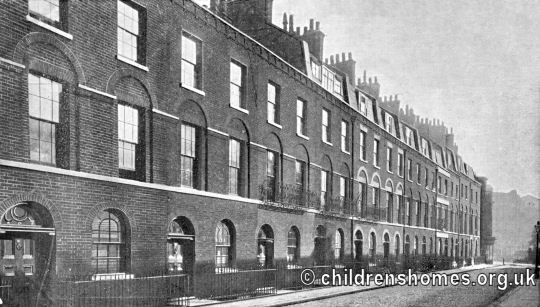
Sekforde Street homes, John Groom's Crippleage and Flower Girls' Mission, Clerkenwell, early 1900s. © Peter Higginbotham
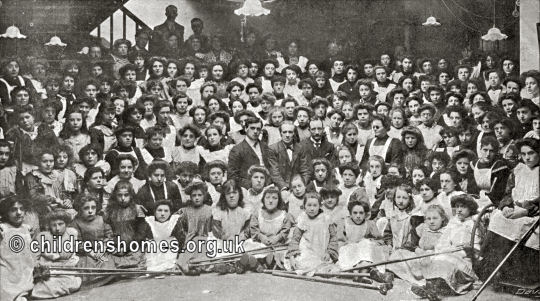
John Groom's Crippleage and Flower Girls' Mission, Clerkenwell, early 1900s. © Peter Higginbotham
Additional factories were later built nearby in Woodbridge Street and Haywards Place. The Mission's products became increasingly sophisticated and included exotic blooms for events such as exhibitions and banquets. In 1912, Queen Alexandra, wife of Edward VII, commissioned Groom's girls to make the flower badges for Alexandra Rose Day — raising funds for her favourite charities. After the First World War, the girls also made some of the first poppies for the Royal British Legion.
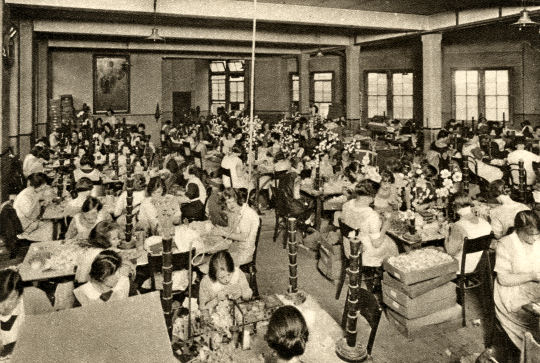
Making roses for Alexandra Day, John Groom's Crippleage and Flower Girls' Mission, Clerkenwell, 1920s. © Peter Higginbotham
In 1890, Groom opened a home for orphaned or abandoned children at Clacton. The home also provided a holiday venue for the London flower girls.
In 1907, the official name of the charity was changed to John Groom's Crippleage and Flower Girls' Mission.
Groom's failing health led to his retirement in 1918. He spent the final year of his life at the orphanage in Clacton, where he died on December 27th, 1919. His eldest son, Alfred, continued Groom's mission work.
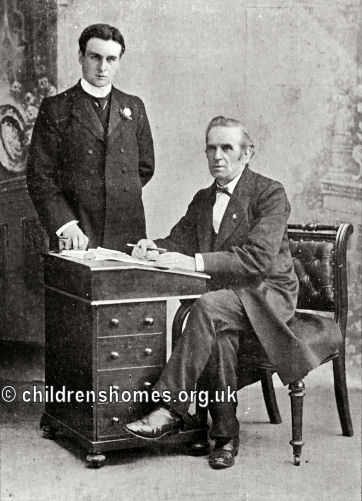
Alfred and John Groom. © Peter Higginbotham
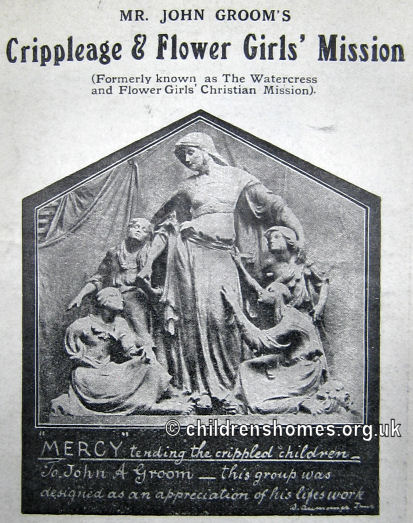
A memorial sculpture for John Groom. © Peter Higginbotham
In 1932, the escalating costs of property rents in London led to the charity moving its operations to a large estate at Edgware Way, Hendon, where purpose built-homes were built alongside the factory facilities. As the demand for artificial flowers declined, the factory diversified into other areas. Edgware finally admitted its first male residents in 1965.
The charity changed its name in 1969 to John Groom's Association for the Disabled. The 1960s and 70s saw a decline in the organisation's involvement with the children and this aspect of its work ended in 1979.
In 1990, the charity's name changed again to become John Groom's Association for Disabled People.
In 2007, John Groom's merged with the Shaftesbury Society to form Livability, now said to be the UK's largest Christian disability charity.
Many of the houses used by Groom in and around Sekforde Street still survive, now in private residential use. The Hendon site is now covered in modern housing. The Groom's legacy is commemorated in the names of the modern roads such as Magnolia Gardens, Larkspur Grove and Roseway.
Records
Note: many repositories impose a closure period of up to 100 years for records identifying individuals. Before travelling a long distance, always check that the records you want to consult will be available.
- The
Ancestry UK
website has two collections of London workhouse records (both name searchable):
- The Find My Past website has workhouse / poor law records for Westminster.
- London Metropolitan Archives, 40 Northampton Road, London EC1R OHB. Holds the charity's surviving administrative records.
Bibliography
- Martin, Nancy A Man with a Vision: the Story of John Groom (1983, RMEP)
Links
Except where indicated, this page () © Peter Higginbotham. Contents may not be reproduced without permission.


